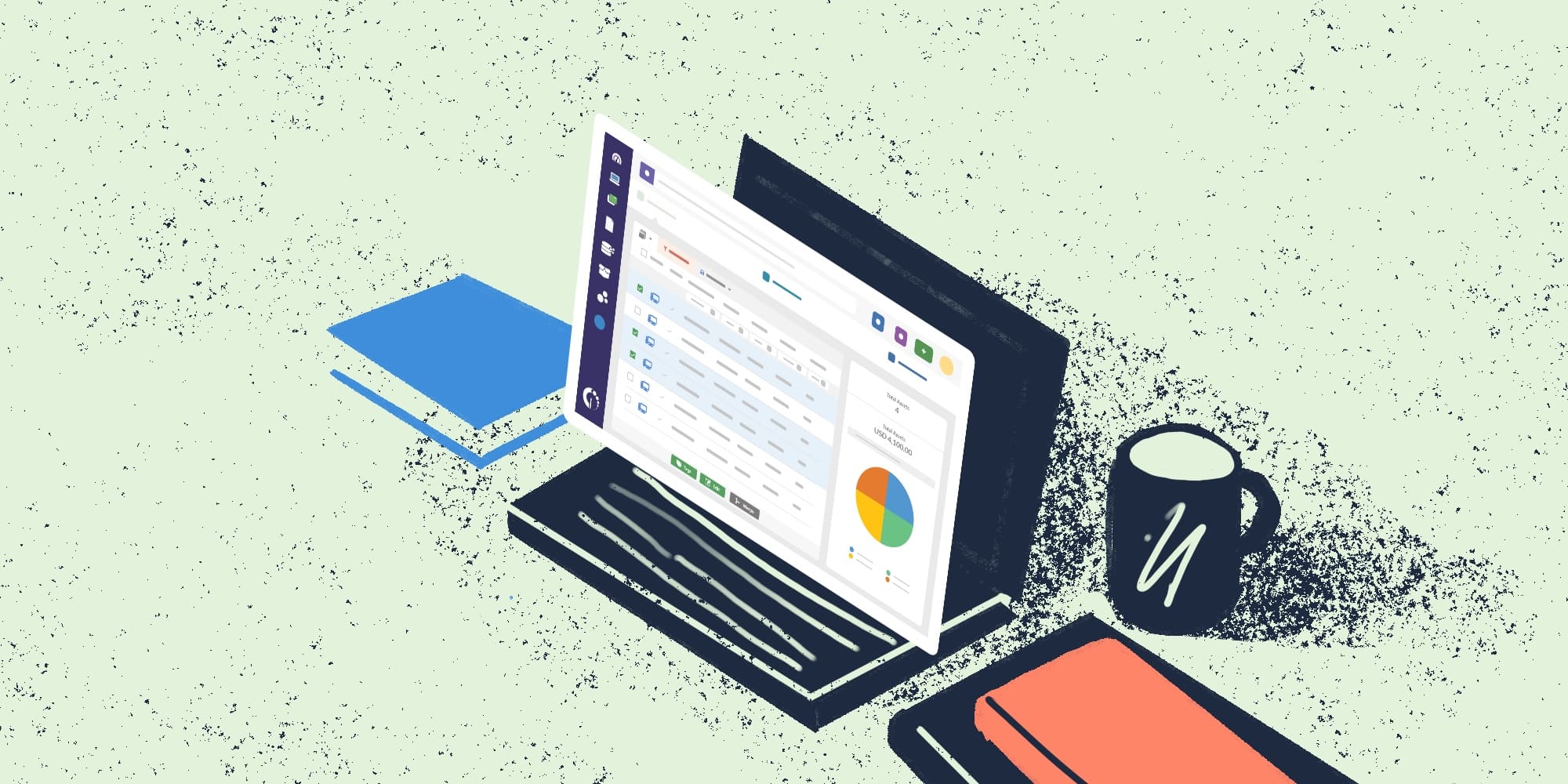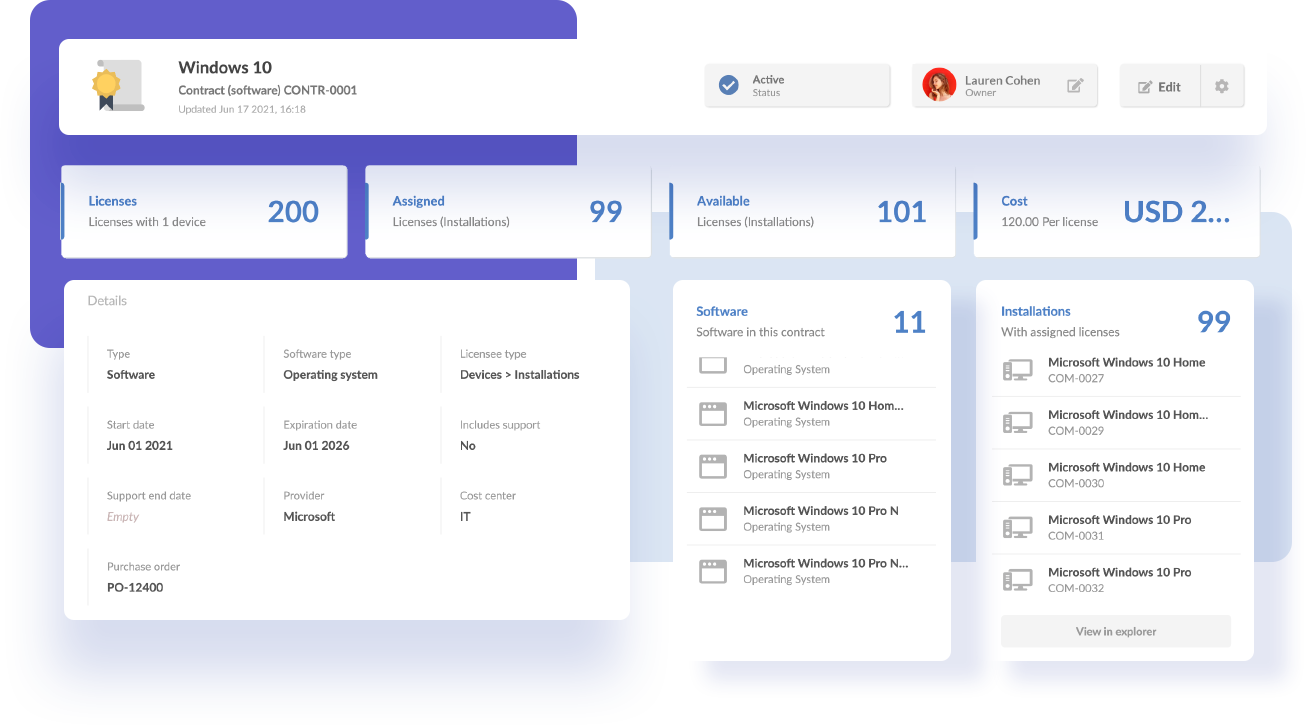There are costly outcomes for any organization as a result of not knowing how to monitor pirated software. Detecting it should be part of your internal software audits. Pirated software can be a source of malware, putting your entire IT infrastructure at risk.As you probably know, copying software and sharing it for free with anyone else is deemed copyright infringement. This has led to preventive measures from many software companies, which typically (and most of the time, ineffectively) try to combat software piracy by copy-protecting software.
In this article, we'll go over the definition of software piracy, its effects on business, and ways to monitor and prevent it.
Let's start with the basics and then work our way up.

Understanding the software industry: What is software piracy?
In a nutshell, software piracy is copying and utilizing an unapproved, unlicensed version of a software program. When you become a software buyer, you purchase a license that conforms to the terms of use previously agreed on by the software developer and vendor.
For instance, if you buy an Adobe package straight from Adobe, you're free to use it as per the terms of the license agreement — you know, that long contract you click past when installing Photoshop.
When you purchase software, you also buy a certain number of licenses. Depending on your needs, you may just be buying a single one or enough to supply all the computers in your company.
There are also five different forms of software piracy:
1. Counterfeiting
Counterfeiting, or the illegal copying, sale, and distribution of copyrighted software, is an attempt to pass off the product as legitimate software. Counterfeit CDs used to be a popular form of this type of software piracy, back when people bought physical copies of software.
2. End-user piracy
End-user piracy involves duplicating software by an unauthorized individual within the software company. This type of piracy may include using a single license for multiple installations, using upgrades from an old unlicensed copy, copying programs to use or distribute them, or acquiring software that requires a special permit without having it.
3. Internet piracy
Internet piracy is probably the most popular, involving the copying of a licensed software program and uploading it for anyone to download. The users who download it also become de-facto pirates by committing the act. This is very common on torrenting sites, where users become liable for copyright theft.
4. Hard-disk loading
Hard-disk loading involves computer-selling businesses installing illegal copies of software on their products to make them more attractive to potential buyers.
5. Client-server piracy
Client-server piracy overuse involves overusing a central copy of a program in a network. Remember: even central copies need multiple users' licenses to run them.
How does software piracy affect businesses?
1. Financial impact of pirated software
Firstly, it makes you lose money. According to SoftwareKey, a piracy prevention website:
“Software piracy is widespread. The Software Alliance reports that software piracy runs as high as 37% of all software usage. Software vendors and companies lose nearly $46 billion annually to piracy.”
So, pirated versions of software contribute significantly to these financial losses, as unauthorized copies directly impact sales and revenue streams.
But those are just the yearly costs vendors and developers suffer, as every pirated copy out there is one lost customer. Beyond stating the obvious, pirated software inside your organization can potentially cost you even more.
2. Legal ramifications
It's one thing to lose a client, but it's another to be penalized if a software audit detects pirated software in your organization. According to Stanford University:
“United States Copyright Act. Holds someone guilty of illegal reproduction of software subject to civil damages of up to $100,000 per title infringed, and criminal penalties, including fines of as much as $250,000 per title infringed and imprisonment of up to five years.”
So, yes, we're talking a quarter of a million per title and potential jail time. Sometimes this jail time doesn't even extend to the people directly responsible but to those higher up in the food chain, like managers.
3. Cybersecurity Risks
And it doesn’t just end there, as pirated software can also increase the likelihood of cyberattacks or several forms of malware getting into your system. Cracked software, in particular, can significantly raise the risk of malware infections and other security threats. You may think, “Hey, no big deal,” but the yearly costs of malware attacks stack up to $359 billion.
To avoid all these, and build more robust cybersecurity, you need to take a proactive approach. Monitoring software will help you ensure every nook and cranny of your organization abides by legal software practices. This software can help you prevent losses in the millions and save yourself and your employees from unnecessary complications.
Now that we have the “why” and the “what,” let’s take a look at the “how.”

How to monitor pirated software in your organization
Monitoring software acts as both a filter and a search-and-destroy patrol. But still, most of the value you'll get from it is keeping track of any possible unlicensed software assets in your midst.
The role of Software Asset Management (SAM) in managing software licenses
Keeping track of licensed and unlicensed software is a necessary part of Asset Management, and that's one of our areas of expertise. When it comes to licenses, its main purpose is to know what’s installed in your company’s computers, to ensure that you comply with all operational and legal requirements.
Having a software Asset Management strategy in place will aid you in many ways:
1. Implementing a software license monitoring plan
First and foremost, an ITAM tool will let you implement a software license monitoring plan. With this, you'll keep an eye on all the different types of license agreements acquired by your company, and their terms (validity, usability, and so on). Hence, you'll be prepared for an audit and avoid fines or other penalties.
2. Combating shadow IT
It'll also allow you to combat shadow IT. Unauthorized software and hardware in your network could lead to potential security breaches — and pirated software falls precisely within this category.
3. Complete asset visibility
Finally, with an IT Asset Management software you'll get a complete map of all the assets in your network, making it easy to spot irregularities, vacant software and hardware, and thus saving you a lot of money.

Using InvGate Asset Management for software monitoring

Now, we mentioned we were a bit of experts in the matter since InvGate Asset Management incorporates specific functions for Software Management.
Our asset monitoring solution enables you to discover and manage the entirety of your IT assets, hardware and software, within your IT asset inventory. There, via a centralized hub, you can keep track and control every single asset without missing a beat.
By scanning your software assets for internal and external compliance, and even detect whether any device is running unauthorized software — no matter where it’s located. If anything’s not how it is supposed to be, it lets you know instantly — including any out-of-date software or licenses about to expire.
In short, it’s the best way to help you stay on top of things effectively and efficiently.
5 tips to prevent pirated software in your company
Your house, your rules, right? Yeah, but if you ask us, it's better to follow some common-sense tips to avoid the fearful wrath of the law (and the hefty financial penalties that come with it).
1. Employee awareness
Ensure that your employees know the terms and conditions governing a program before installing it.
2. Software policy enforcement
Create and enforce a software policy that defines how your employees can use company software. No gray areas here. Distribute this policy, and make sure they're aware of it at all times, including signing an anti-piracy statement.
3. Regular software audits
Conduct regular software audits. That means every employee must provide a product name, serial number, and version number of the software installed on their machines. Doing this regularly ensures you know what's what and don't bump into ugly surprises.
4. Understanding software licenses
Know your software licenses to a tee. If an employee isn't allowed to use a license at home, you should know and act accordingly before any issues show up.
5. Record keeping
Finally, make sure you have a proper record of each software license. This entails (as per the section above) creating a normalized catalog where you can see every product by name, serial, version, and the computers where you're running each program.
In our opinion, stick to these, and you're golden. Remember: it's not about how much you can do after the fact, but how much you can do before a copyright infringement creates issues.

Conclusion: Stay vigilant against piracy
Pirated software can have more than the apparent harmful effects. Yes, if you're a software company, it can make you lose clients. But it's more of a threat what can happen if it's your company that uses illegal software.
Now, you might say "I could never," but don't forget that this can happen behind your back. There are many types of pirated software and ways to pirate it. Thus, you could incur a felony for not using the software license according to its terms and conditions or due to unauthorized software installed on company hardware by an employee who's unaware of the damage.
Luckily, there's an easy way to deal with this and avoid surprises when the software audit comes: ITAM tools. Software such as InvGate Asset Management monitors your whole network and lets you know of any irregularities.
If you want to go one step further, you can complement your asset management solution with a proper cybersecurity culture to ensure that your teams are aware of the dangers and consequences.
No matter your final decision, remember, many companies start being compliant and then begin to rest on their laurels. Piracy is serious business, meaning you must stay ever-vigilant, becoming the first line of defense against potential issues. Stick to it, and you'll be fine.
Frequently Asked Questions (FAQs)
1. How serious is software piracy?
Tremendously serious. Fines can go up to $250,000 per unauthorized install, and the jail penalties can be anywhere from 1 to 5 years. To top it off, even people not directly responsible can be held accountable.
2. How is pirated software detected?
Through the use of monitoring software that detects IT assets. Great software will help you create a complete catalog and determine whether any program is non-compliant with internal or external licensing requirements.
3. Does Windows 10 detect pirated software?
Windows 10 (as long as you’ve got a legal installation running) automatically scans your computer for pirated software.
4. What percentage of software is pirated?
The Software Alliance reports that up to 37% of all software used worldwide is pirated.















